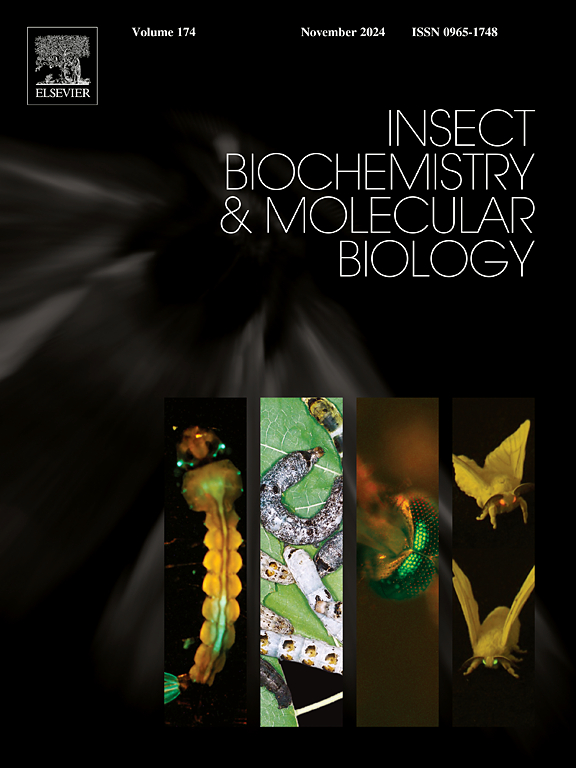Mini-review: Aspects of cuticle formation and structure advanced by studies in Nilaparvata lugens
IF 3.7
2区 农林科学
Q2 BIOCHEMISTRY & MOLECULAR BIOLOGY
引用次数: 0
Abstract
A hallmark of insects is their cuticle that protects them against predators and parasites, prevents desiccation and xenobiotic penetration and, finally, serves locomotion as an exoskeleton. In the last two decades, tremendous efforts have yielded a plethora of molecular and histological data that have boosted our understanding of the mechanisms of cuticle formation and function. As the factors involved in cuticle formation and function are to a large extent specific to insects, these data may be used in intelligent pest management strategies.
The brown planthopper Nilaparvata lugens is a major rice pest in Asia. Cuticle research in this species has been following findings in other insect species recapitulating most collected results. There are, in addition, several important data in N. lugens that advanced our understanding in cuticle biology in insects generally. For instance, it was demonstrated in the brown planthopper that a chitin-binding protein, namely NlugCpr47 is needed for organ shaping. Moreover, based on genetic data, it was hypothesised that cuticular lipids may be organised in layers depending on the size of the molecules. Finally, pore canals, the nanotubes system that is used as a transport route for cuticle lipid deposition, were visualised in 3D with high resolution for the first time in an insect.
These examples, reviewed in this article, underline the importance of a detailed molecular and histological approach in non-model insects for a better understanding of cuticle biology in general.

综述:龙葵角质层形成和结构的研究进展。
昆虫的一个标志是它们的角质层,它可以保护它们免受捕食者和寄生虫的侵害,防止干燥和外来生物的渗透,最后,它还可以作为外骨骼来运动。在过去的二十年里,巨大的努力已经产生了大量的分子和组织学数据,这些数据促进了我们对角质层形成和功能机制的理解。由于角质层形成和功能的相关因素在很大程度上是昆虫特有的,因此这些数据可用于智能害虫管理策略。褐飞虱(Nilaparvata lugens)是亚洲水稻的主要害虫。该物种的角质层研究一直遵循其他昆虫物种的发现,概括了大多数收集到的结果。此外,还有一些关于N. lugens的重要数据,这些数据促进了我们对昆虫角质层生物学的理解。例如,在棕色飞虱中证明,器官形成需要一种几丁质结合蛋白,即NlugCpr47。此外,根据遗传数据,假设角质层脂质可能根据分子的大小分层组织。最后,作为角质层脂质沉积运输途径的纳米管系统孔管首次在昆虫体内以高分辨率三维可视化。本文回顾了这些例子,强调了在非模式昆虫中详细的分子和组织学方法对于更好地理解角质层生物学的重要性。
本文章由计算机程序翻译,如有差异,请以英文原文为准。
求助全文
约1分钟内获得全文
求助全文
来源期刊
CiteScore
7.40
自引率
5.30%
发文量
105
审稿时长
40 days
期刊介绍:
This international journal publishes original contributions and mini-reviews in the fields of insect biochemistry and insect molecular biology. Main areas of interest are neurochemistry, hormone and pheromone biochemistry, enzymes and metabolism, hormone action and gene regulation, gene characterization and structure, pharmacology, immunology and cell and tissue culture. Papers on the biochemistry and molecular biology of other groups of arthropods are published if of general interest to the readership. Technique papers will be considered for publication if they significantly advance the field of insect biochemistry and molecular biology in the opinion of the Editors and Editorial Board.

 求助内容:
求助内容: 应助结果提醒方式:
应助结果提醒方式:


